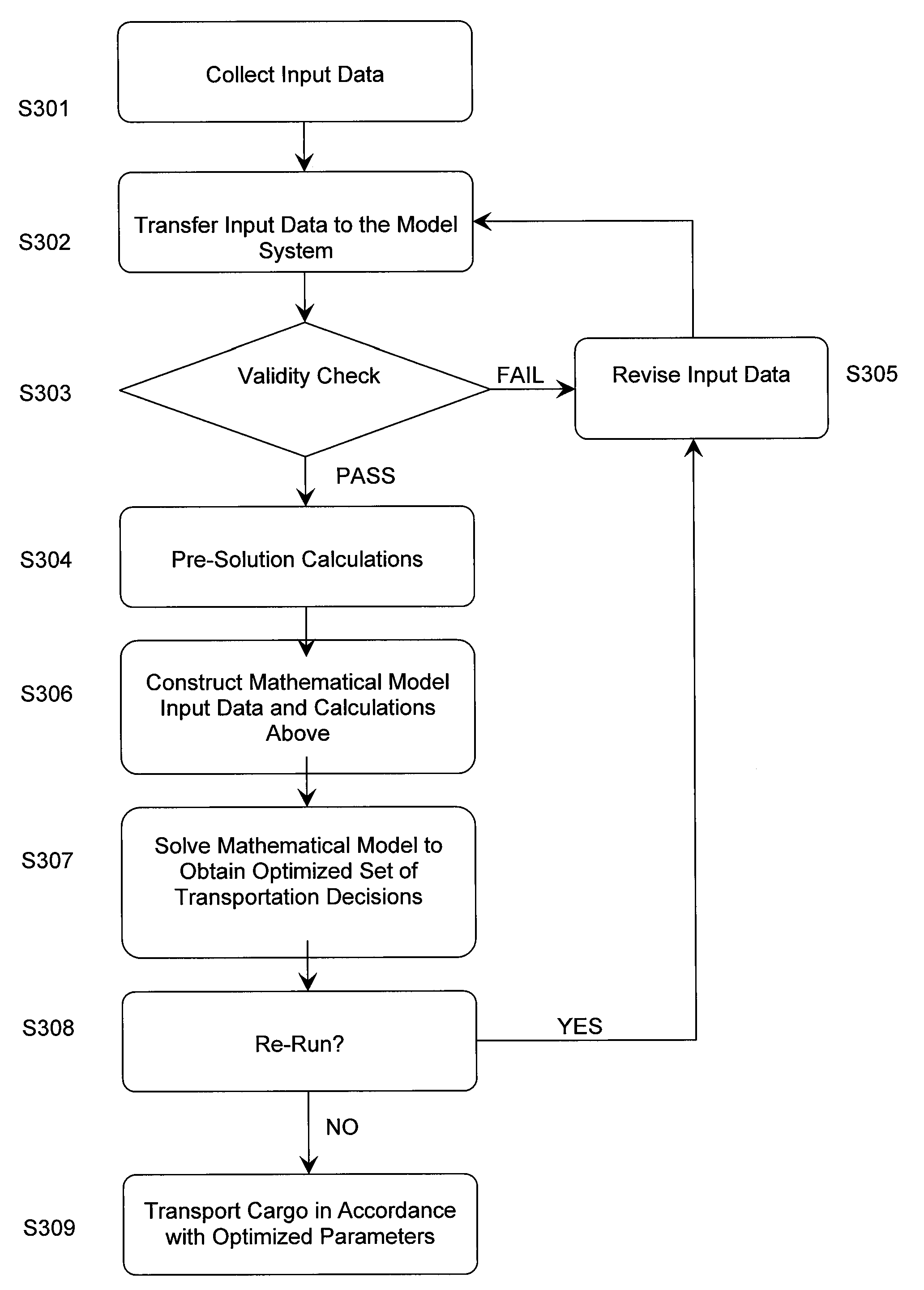Method for optimizing a transportation scheme
a transportation scheme and optimization technology, applied in forecasting, instruments, data processing applications, etc., can solve the problems of complex and dynamic marine transportation business environment, significant transportation costs, complex and dynamic marine transportation scheduling decisions, etc., and achieve the effect of maximizing the total net margin
- Summary
- Abstract
- Description
- Claims
- Application Information
AI Technical Summary
Benefits of technology
Problems solved by technology
Method used
Image
Examples
Embodiment Construction
Definitions
[0026]All words in this specification are intended to have their broadest conventional meaning.
[0027]For further clarity, the conventional meaning of some terms used in this specification is set forth below.
[0028]“Allocation” means assigning available cargo to various demand locations in order to meet destination requirements on the basis of some preference (e.g., economic), while satisfying existing constraints and limitations.
[0029]“Blend-down Ratio” represents a set of constraints which limit the mix (or blend) of supply grades of bulk material (e.g., crude oil), which when delivered on a single vehicle would be acceptable for a demand location segregation (e.g., port segregation).
[0030]“Bulk material” means any material that is unbound and substantially fluid as loaded; in other words, it is in a loose unpackaged form. Examples of bulk material include coal, grain, and petroleum products.
[0031]“Cargo” means any product or material being transported by a vehicle. In a ...
PUM
 Login to View More
Login to View More Abstract
Description
Claims
Application Information
 Login to View More
Login to View More - R&D
- Intellectual Property
- Life Sciences
- Materials
- Tech Scout
- Unparalleled Data Quality
- Higher Quality Content
- 60% Fewer Hallucinations
Browse by: Latest US Patents, China's latest patents, Technical Efficacy Thesaurus, Application Domain, Technology Topic, Popular Technical Reports.
© 2025 PatSnap. All rights reserved.Legal|Privacy policy|Modern Slavery Act Transparency Statement|Sitemap|About US| Contact US: help@patsnap.com



